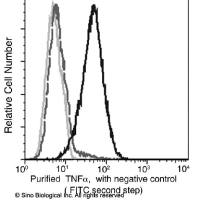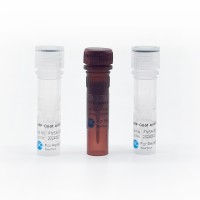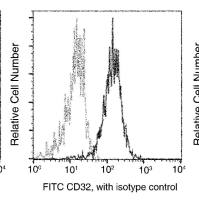Characterization of Whole Body Cholesterol Fluxes in the Mouse
互联网
- Abstract
- Table of Contents
- Materials
- Figures
- Literature Cited
Abstract
Atherosclerosis is characterized by excessive cholesterol accumulation in the vessel wall. Current therapies mainly aim at decreasing influx through lowering plasma LDL?cholesterol levels. The challenge is to develop therapeutic interventions to increase efflux of excess cholesterol from the vessel wall. The pathway that mediates this efflux from vessel wall to final excretion in the feces is called reverse cholesterol transport. Recently, it has become apparent that the intestine plays an important regulatory role in this pathway. This article describes in detail a variety of experimental approaches to measure cholesterol fluxes in the hepatobiliary system as well as in the intestinal pathway. Curr. Protoc. Mouse Biol. 1:413?427 © 2011 by John Wiley & Sons, Inc.
Keywords: mouse; fecal cholesterol excretion; biliary excretion; transintestinal cholesterol; excretion
Table of Contents
- Introduction
- Basic Protocol 1: Measurement of Dietary Cholesterol Intake and Neutral Sterol Excretion
- Basic Protocol 2: Measurement of Biliary Cholesterol Excretion
- Basic Protocol 3: Direct Measurement of Fractional Cholesterol Absorption by Determination of Lymphatic Cholesterol Transport
- Alternate Protocol 1: Indirect Measurement of Fractional Cholesterol Transport via Fecal Dual‐Isotope Ratio Method
- Alternate Protocol 2: Indirect Measurement of Fractional Cholesterol Transport by the Plasma Dual‐Isotope Ratio Method
- Basic Protocol 4: Estimation of Transintestinal Cholesterol Excretion by the Sterol Balance Method
- Alternate Protocol 3: Measurement of Transintestinal Cholesterol Excretion by Modeling of Cholesterol Fluxes Determined via Stable Isotope Enrichment Estimation
- Commentary
- Literature Cited
- Figures
- Tables
Materials
Basic Protocol 1: Measurement of Dietary Cholesterol Intake and Neutral Sterol Excretion
Materials
Basic Protocol 2: Measurement of Biliary Cholesterol Excretion
Materials
Basic Protocol 3: Direct Measurement of Fractional Cholesterol Absorption by Determination of Lymphatic Cholesterol Transport
Materials
Alternate Protocol 1: Indirect Measurement of Fractional Cholesterol Transport via Fecal Dual‐Isotope Ratio Method
Alternate Protocol 2: Indirect Measurement of Fractional Cholesterol Transport by the Plasma Dual‐Isotope Ratio Method
Basic Protocol 4: Estimation of Transintestinal Cholesterol Excretion by the Sterol Balance Method
|
Figures
-

Figure 1. Simulated data for lymphatic transport of cholesterol. Approximately 35% of the administered [14 C] cholesterol and 93% [3 H]palmitic acid is recovered in the lymph. View Image
Videos
Literature Cited
| Literature Cited | |
| Bligh, E.G. and Dyer, W.J. 1959. A rapid method of total lipid extraction and purification. Can. J Biochem. Physiol. 37:911–917. | |
| Donovan, J. and Brown, P. 2006a. Parenteral injections. Curr. Protoc. Immunol. 73:1.6.1‐1.6.10. | |
| Donovan, J. and Brown, P. 2006b. Blood collection. Curr. Protoc. Immunol. 73:1.7.1‐1.7.9. | |
| Keys, A., Aravanis, C., Van Buchem, F.S.P., Blackburn, H., Buzina, R., Djordjevic, B.S., Dontas, A.S., Fidanza, F., Karvonen, M.J., Kimura, N., Menotti, A., Nedeljkovic, S., Puddu, V., Punsar, S., and Taylor, H.L. 1981. The diet and all‐causes death rate in the Seven Countries Study. Lancet 2:58–61. | |
| Ostlund, R.E. Jr. 2002. Phytosterols in human nutrition. Ann. Rev. Nutr. 22:533‐549. | |
| van der Veen, J.N., van Dijk, T.H., Vrins, C.L., van Meer, H., Havinga, R., Bijsterveld, K., Tietge, U.J., Groen, A.K., and Kuipers, F. 2009. Activation of the liver X receptor stimulates trans‐intestinal excretion of plasma cholesterol. J. Biol. Chem. 284:19211‐19219. | |
| van der Velde, A.E., Vrins, C.L., van den Oever, K., Seemann, I., Oude Elferink, R.P., van Eck, M., Kuipers, F., and Groen, A.K. 2008. Regulation of direct transintestinal cholesterol excretion in mice. Am. J. Physiol. Gastrointest. Liver Physiol. 295:G203‐G208. | |
| Wang, D.Q.H. and Carey, M.C. 2003. Measurement of intestinal cholesterol absorption by plasma and fecal dual‐isotope ratio, mass balance, and lymph fistula methods in the mouse. J. Lipid Res. 44:1042–1059. |









